Last updated: September 2025
Car title loans can look like a quick fix when cash is tight. You pledge your vehicle title, receive a short‑term loan and hope your finances improve before the due date. But if you’re searching for car title loans no income, know that lenders often add higher fees, stricter collateral conditions and harsh penalties that put your car at real risk.
This guide explains the legal framework, risks and safer alternatives for car title loans without income in the United States, United Kingdom and Canada. You’ll learn which document edits are allowed, which changes cross the line into fraud, and how to package records so underwriters can verify them quickly. Throughout, we recommend lawful alternatives and practical ways to present your documents accurately—without inventing numbers or identities.
At FinancialDocsProvider.com, we specialise in proof‑of‑income editing and bank statement formatting across the US, UK and Canada. We never fabricate data. We improve legibility, organise multi‑page files and align your documents with lender and regulator expectations so decisions arrive faster—and lawfully.
Related Entities & Terms
Understanding the terminology will make it easier to navigate car title loans and their alternatives. Here are key terms and entities referenced in this guide:
- Car title loans, auto title loans, vehicle title loans and logbook loans (UK).
- W‑2, 1099‑NEC/MISC, Schedule C (US); payslips, P60/P45, SA302 (UK); T4, T4A, Notice of Assessment (NOA) and T1 General (Canada).
- Regulators: Consumer Financial Protection Bureau (CFPB), Federal Trade Commission (FTC), Internal Revenue Service (IRS); Financial Conduct Authority (FCA) and HM Revenue & Customs (HMRC); Financial Consumer Agency of Canada (FCAC) and Canada Revenue Agency (CRA).
- Concepts: annual percentage rate (APR), debt‑to‑income (DTI) ratio, lien, repossession, rollover, lender licensing and default notice.
- Editing terms: redaction, OCR, PDF/A export, accessibility formatting, document reconciliation and audit trails.
What are the legal basics of car title loans with no income?
Summary: Title loans use your vehicle as collateral and often carry very high costs. Laws differ by country and region, but lenders generally must assess your ability to repay and disclose total costs. If you cannot repay, repossession is a real possibility.
Car title loans require you to pledge your vehicle’s title as collateral while keeping possession of the car. These short‑term loans often last 15 to 30 days and carry high fees and interest rates. If you can’t repay the loan, the lender may repossess your vehicle, sell it and keep the proceeds. This risk is magnified when you have no reliable income to demonstrate repayment ability.

United States: Auto title loans are legal in some states and prohibited in others. According to a 2025 report by the Center for Responsible Lending, high‑cost vehicle title lending is illegal in 33 states and the District of Columbia, yet lenders still attempt to operate in prohibited jurisdictions through online or in‑person schemes. Even where title loans are allowed, federal rules require lenders to determine a borrower’s ability to repay before making a loan. The Consumer Financial Protection Bureau’s rule on payday, vehicle title and high‑cost installment loans recognises it as an unfair and abusive practice to offer these loans without reasonably verifying the borrower’s ability to repay. The rule also prohibits lenders from debiting your account after two failed attempts without new authorisation. State laws impose additional caps on interest rates, fees, loan amounts and repossession procedures.
United Kingdom: Direct car title loans aren’t common, but “logbook loans” serve a similar function. Under a bill of sale, you transfer ownership of your vehicle to the lender and continue driving it while you repay the loan. Logbook loans are regulated under the Consumer Credit Act. If you miss multiple payments, the lender can repossess your vehicle without a court order, but they must send you a default notice giving at least 14 days to catch up. The high‑interest nature of logbook loans (often around 400% APR) and the transfer of ownership mean you could lose your car quickly. Because these loans target borrowers with poor credit, the UK’s Financial Conduct Authority requires lenders to hold a consumer credit licence, follow strict disclosure rules and treat borrowers fairly. Most mainstream banks and credit unions do not offer logbook loans; instead, they are marketed by specialised lenders.
Canada: The federal government does not directly regulate title loans. Provinces and territories set their own rules and may require lenders to be licensed or registered. In January 2025, the Government of Canada reduced the criminal interest rate from roughly 48% to 35% APR, part of a broader effort to curb predatory lending. The Financial Consumer Agency of Canada (FCAC) warns that title loans typically have short terms (3 months to 3 years) and high fees. Borrowers have the right to receive clear information about total cost, interest rates and fees, and lenders may install GPS trackers or immobiliser devices to enforce repayment. If you miss payments, lenders may charge extra fees and seize your car.
Across these jurisdictions, the common themes are: lenders must be licensed, they must disclose costs, and they must not make loans unless they believe you can repay. Without income, it’s difficult to meet these requirements. Many lenders will still ask for proof of income or alternative evidence such as pension payments, annuities, disability benefits or bank statements. In states where title loans are illegal, obtaining one could violate usury laws and expose you to scams.
Which edits are allowed on your documents?
Summary: You may clean, compile and annotate documents to improve readability—without changing facts. Think of these edits as presentation improvements, not data changes, so underwriters can verify information quickly.
When preparing proof‑of‑income or other documents for a title loan application, you may need to clean up your files without changing any facts. The goal is to make your records easy for underwriters to read and verify while preserving their integrity. Here are examples of permissible edits:
- Redaction of sensitive data: You can black‑out your Social Security or National Insurance number, bank account numbers and other personal identifiers. Redaction protects your privacy while leaving transaction amounts and dates visible.
- Reformatting for legibility: Combining multiple pay stubs or invoices into a single PDF, rotating pages, adjusting brightness and contrast, and using optical character recognition (OCR) to convert scanned images into searchable text are all allowed. These changes improve accessibility but do not alter the content.
- Adding explanatory labels or summaries: In a cover page or footnotes, you may include a narrative explaining your employment situation, sources of income or irregular payments. Summaries must reflect the actual figures; do not “smooth” fluctuations to appear more consistent.
- Converting formats: Converting a Word document or JPEG scan into a PDF/A ensures stability and preserves metadata. Splitting large files into manageable sections is acceptable when it does not omit any pages.
- Highlighting or bookmarking key data: Use digital highlights or bookmarks to direct reviewers to crucial lines (e.g., year‑to‑date totals or tax withheld). Make sure your highlights do not obscure text or change meanings.
Our team at FinancialDocsProvider offers bank statement formatting, pay stub consolidation and other compliance‑friendly edits. We focus on readability and organisation to expedite loan decisions.
Mini‑scenario: You are a gig worker with dozens of weekly deposits. We can reconcile deposits to invoices, build a month‑by‑month summary and add bookmarks so reviewers can jump to each month in seconds—all without changing a single amount.
What edits are illegal and why?
Summary: Any change that alters facts—amounts, dates, payees, identities or liabilities—is unlawful. Regulators treat these actions as fraud because they mislead lenders and can trigger repossession, lawsuits and even criminal charges.
Altering the substantive content of your income documents to obtain a loan you might not otherwise qualify for is fraud. Fraudulent edits include changing numbers, dates, employers or names; fabricating documents; and omitting liabilities. Regulators treat these practices as serious offenses because they mislead lenders and can cause financial harm.
- Changing amounts, dates or payees: Modifying the deposit amounts on bank statements, adjusting pay stub dates to appear consistent, or listing false employers misrepresents your ability to repay. In the United States, presenting false information for a loan can lead to civil penalties and even criminal charges.
- Creating fake documents: Generating a fictitious pay stub, rental agreement or title document is illegal. Many title lenders verify income by contacting employers, cross‑checking with tax records and using fraud detection software. Fake documents are usually caught.
- Removing pages or transactions: Deleting pages that show overdrafts or omitted debts misleads underwriters. Redaction must not omit substantive information.
- Falsely stating you have no other liens: In Canada, lenders check whether a car already has a lien. Concealing an existing lien or misrepresenting that you own a vehicle free and clear is a breach of contract and can lead to repossession or legal action.
The consequences extend beyond losing your loan. Survey data from 2024 shows that vehicle‑title loans often trap borrowers in debt: about two‑thirds of borrowers reported late payments, and 22.9 percent of late‑paying borrowers had their car repossessed. Some also faced lawsuits or wage garnishment. Submitting fraudulent documents increases the risk of these outcomes and may result in charges of forgery or wire fraud.
If you’re unsure whether a formatting change is compliant, consult our team or legal counsel.
When do you need professional document formatting?
Summary: Even “no income” lenders look for proof of repayment. If you lack traditional pay stubs, you can present alternative evidence—cleanly organised—to improve speed and outcomes without overstating your finances.
Even lenders that claim to overlook income typically request documentation to verify that you can repay the loan. If you lack a traditional pay stub, you’ll need to assemble alternative evidence. Professional document formatting helps you present your finances clearly and can reduce delays or denials. Here are common scenarios:
Salaried and hourly employees
Most car title lenders ask for proof of income, such as recent pay stubs and your most recent W‑2. Underwriters use these forms to calculate your debt‑to‑income ratio and determine if the loan is manageable. If your stubs are handwritten, torn or scanned at odd angles, lenders may reject them or ask for replacements. Our team can clean up and merge your pay stubs, verify their arithmetic and ensure the file format is accepted by online portals. For more details on what auto lenders require, read our car loan proof‑of‑income guide.
Example: Your W‑2 shows bonuses paid quarterly, creating uneven monthly totals. We add a brief note clarifying the bonus schedule and highlight year‑to‑date income so reviewers don’t misread fluctuations as missing pay.
Self‑employed, freelancers and gig workers
If you don’t receive regular pay stubs, lenders may ask for bank statements, 1099 forms, invoices and tax returns. A well‑organised packet with monthly income summaries, invoice lists and Schedule C or SA302 forms can make your cash flow easy to understand. Organising these documents yourself can be time‑consuming. Our guide for proving income without a traditional job explains how to collect and format these records. We assist by reconciling your invoices to deposits, flagging any discrepancies, and bundling everything into a single PDF with bookmarks.
Example: You have five platforms paying you irregularly. We build a one‑page index mapping each platform’s deposits to your bank statements and flag a clear trail for verification.
Borrowers with irregular or no income
If you truly have no income, title loans are extremely risky. Because lenders base the loan amount on your vehicle’s value, you could lose your car without solving your cash‑flow issue. Some borrowers use pension payments, disability benefits, unemployment insurance or rental income as proof. It’s important to document these sources accurately. If your bank statements show periodic deposits, highlight them and attach award letters or statements. Avoid overstating your resources; lenders may cross‑check with government databases.
Tip: Add a short cover letter explaining temporary gaps (e.g., seasonal work or medical leave) and when income is expected to resume. Keep it factual and verifiable.
Safer alternatives
Before pledging your car, explore options with lower risks. Credit unions, community development financial institutions (CDFIs) and online lenders offer personal loans with more favourable terms. Some credit unions provide small‑dollar loans that cap interest rates below 18% APR. In Canada, the new 35% APR cap makes certain high‑interest loans less expensive. Other alternatives include:
- Refinancing or negotiating with existing creditors: Contact your credit card issuer, landlord or lender to request a reduced payment plan or deferral.
- Borrowing from friends and family: If possible, agree on clear terms and put the agreement in writing to avoid misunderstandings.
- Side gigs or selling assets: Temporarily boosting income through part‑time work or selling unused items may provide enough cash to cover short‑term needs.
- Community assistance programs: Local charities, religious organisations and government agencies sometimes offer emergency grants or loans with no interest.
- Hardship programs: Utilities, phone providers and insurers often have hardship plans that reduce or delay payments for a few months.
Quick comparison checklist: For each alternative, note the APR, fees, repayment term, collateral requirements and penalties. Avoid any product that requires surrendering keys or installing immobilisers unless you fully accept the risk.
How does FinancialDocsProvider work?
Summary: We organise your existing records—no fabrication, ever. Our workflow emphasises reconciliation, accessibility formatting and clear audit trails so lenders can verify fast.
Our process is designed to deliver fast, accurate and compliant document packages:
- Intake consultation: You tell us which documents you need to prepare and for what purpose. We clarify deadlines, required forms and any country‑specific rules (US, UK or Canada).
- Document collection: You securely upload your existing pay stubs, bank statements, tax returns, invoices and IDs. We never ask you to create new records or change factual information.
- Reconciliation & verification: Our editors cross‑check your documents for consistency, flag anomalies and reconcile deposits to invoices. We may suggest attaching additional evidence, such as a tax transcript or insurance statement, to improve credibility.
- Formatting & redaction: We adjust brightness and orientation, combine multiple files, add bookmarks and apply OCR. We redact only sensitive identifiers (e.g., account numbers), not amounts or dates. Throughout this process we follow the legal guidelines described above.
- Quality assurance & delivery: Before sending your final package, we perform a quality check to ensure that all pages are present, calculations are accurate and the formatting is neat. Your compiled document is then delivered via secure download link within agreed timelines—often within 24 hours.
We do not provide legal advice, but our experience with underwriters and compliance standards helps ensure your documents meet the expectations of lenders and regulators. To learn more about our process, visit our About page.
Data handling: We retain files only as long as needed to complete your project, then purge them on request. Access is restricted to your assigned editors.
Compliance checklist
Summary: Use this step‑by‑step list to prepare a complete, verifiable file. Thorough, clean documentation reduces follow‑ups and speeds decisions.
Use this checklist to prepare your title loan application or any proof‑of‑income packet. Ensuring everything is complete and accurate will improve your chances of approval and reduce processing delays:
- Confirm whether car title or logbook loans are legal in your state, province or country. Check with your state attorney general or provincial consumer affairs office.
- Verify that the lender is licensed and displays their licence number clearly.
- Gather original documents: vehicle title (free of liens), proof of insurance, government‑issued photo ID, proof of address, and proof of income (pay stubs, bank statements, 1099s, pension or benefit statements).
- Include your most recent tax returns or transcripts if you are self‑employed or have variable income.
- Ensure each document is legible: no blurry scans, missing pages or handwritten edits.
- Redact only personally identifiable information. Do not redact transaction amounts, pay dates or employer names.
- Convert your files to PDF/A format and use bookmarks to highlight important sections.
- Prepare a cover letter summarising your employment situation and listing your documents. Be truthful and transparent.
- Review the contract terms carefully. Pay special attention to interest rate, fees, repossession rights and any clauses about GPS tracking devices.
- Create a repayment plan that fits within your budget. Avoid rolling over the loan multiple times, as fees accumulate quickly and can lead to repossession.
- After repayment, ensure the lender removes the lien from your vehicle and provides a letter confirming release.
Mini‑prep timeline: Day 1—collect and scan; Day 2—reconcile deposits to income; Day 3—final QA, bookmarks and cover letter; Day 4—submit and track.
Red flags and common mistakes
Summary: Most costly errors stem from ignoring legal limits, rolling over loans or misrepresenting income. Stay transparent, verify licensing and read the fine print before signing anything.
Avoid these pitfalls when considering a car title loan or preparing your documents:
- Ignoring the law: Taking a title loan in a state or province where it’s prohibited can expose you to illegal lenders and scams.
- Not comparing alternatives: Title loans often have APRs exceeding 100%. In Canada, new caps reduce rates to 35% APR for certain loans, but these loans are still expensive. Shop around for personal loans or credit union products.
- Rolling over loans: Each rollover adds fees, and lenders may encourage extensions that trap you in a debt cycle.
- Surrendering your keys: Some lenders demand a copy of your keys or install immobiliser devices. While legal in some regions, these measures increase the risk of losing your vehicle. Understand what you’re agreeing to.
- Falsifying information: Presenting fake pay stubs or inflating income is fraud and can lead to repossession, lawsuits or criminal charges.
- Neglecting to read the contract: Hidden fees, balloon payments and prepayment penalties may be buried in the fine print. The Truth in Lending Act (US) and Consumer Credit Act (UK) require lenders to disclose terms, but you must read them.
- Not verifying the lender: Check reviews and verify the lender’s physical address. Some online lenders operate from foreign jurisdictions, making it harder to enforce your rights.
- Mixed messages in your documents: Inconsistencies—like different addresses across files—trigger manual reviews and delays. Ensure details align.
Resources & further reading
Summary: Use official sources to confirm rules in your region and to understand your rights. The links below include plain‑language explainers and regulator guidance.
Use these resources to learn more and verify specific rules in your jurisdiction:
- Consumer.gov – Car Title Loans Explained – Provides a plain‑language overview of how car title loans work and warns about rollovers and repossession.
- CFPB Final Rule on Payday and Vehicle Title Loans – Explains mandatory ability‑to‑repay determinations and restrictions on repeated payment withdrawal attempts.
- Financial Consumer Agency of Canada – Title Loans – Outlines rules, warnings and provincial resources.
- Center for Responsible Lending – Under the Radar Report – Discusses the prevalence of illegal title loans in prohibited states and the harm they cause.
- Proving Income for a Car Loan – W‑2 vs 1099 – Our detailed guide on what documents auto lenders require and how to package them.
- How to Prove Income Without a Traditional Job – Provides strategies for freelancers, gig workers and anyone lacking standard pay stubs.
- How to Qualify for a Title Loan with Bad Credit – Discusses qualification requirements, including proof of income.
- Contact our team – Reach out for personalised document preparation.
Frequently Asked Questions
Summary: These answers address legality, documentation and risk. They also clarify what happens if you can’t repay and how to avoid scams.
Can I get a car title loan with no income?
Many lenders advertise “no income” title loans, but in practice they still require evidence of ability to repay. The CFPB deems it an unfair practice to issue payday or title loans without reasonably determining that you can repay. Lenders may accept alternative income sources such as retirement benefits, disability payments or rental income. Without any income, you’re at high risk of losing your car, and some lenders may refuse your application.
Are car title loans legal in my state or province?
In the US, high‑cost vehicle title lending is illegal in 33 states and the District of Columbia. In Canada, rules vary by province and there is a federal interest rate cap of 35% APR for most consumer loans. In the UK, logbook loans are regulated under the Consumer Credit Act; lenders must hold a licence and follow strict rules about repossession.
What documents do I need for a title loan?
Expect to provide your vehicle title (free of liens), proof of insurance, a government‑issued photo ID, proof of residence and proof of income. For salaried workers, this might be recent pay stubs and a W‑2. Self‑employed borrowers should submit bank statements, 1099s or invoices. Canadian lenders may also require a Notice of Assessment.
What happens if I can’t repay a title loan?
If you miss a payment, lenders may charge fees, activate GPS immobilisers or repossess your vehicle. Rolling over the loan increases costs and debt. In some UK logbook loans, lenders must give you a 14‑day default notice before repossession.
How can I avoid scams?
Work only with licensed lenders, check reviews and avoid companies that guarantee approval without verifying your income. Be wary of requests to surrender your car keys or pay advance fees. Verify that the lender’s contact information and licensing details are legitimate. Use official resources listed above to confirm legal compliance.
Need accurate, reliable financial documents fast? Contact FinancialDocsProvider.com now.
About the author: Our editorial team comprises compliance specialists and document analysts with decades of experience formatting bank statements, pay stubs and tax records for lending, rental and government applications. We stay up to date on regulatory changes in the US, UK and Canada. Learn more about our process and team.
Can I get a car title loan with no income? Many lenders market “no income” title loans, but they typically require proof you can repay. The CFPB treats lending without a reasonable ability‑to‑repay determination as an unfair practice. Alternative income (benefits, pensions, rental income) may qualify, but with no income you risk losing your car.
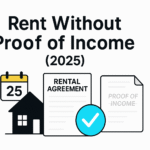
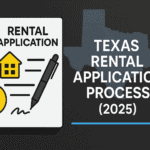
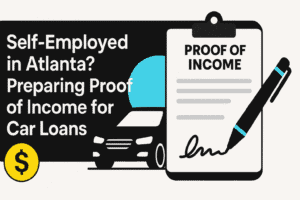
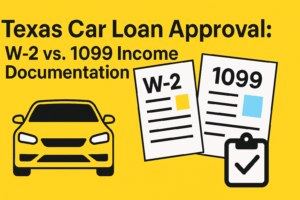
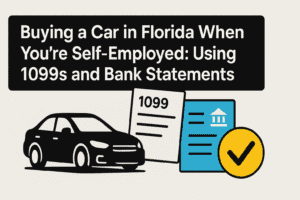
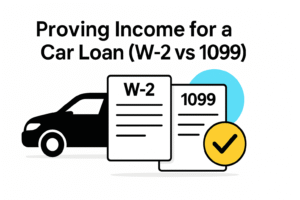
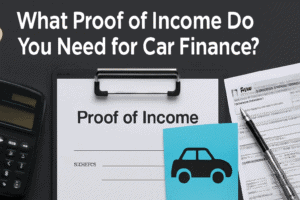
Add comment